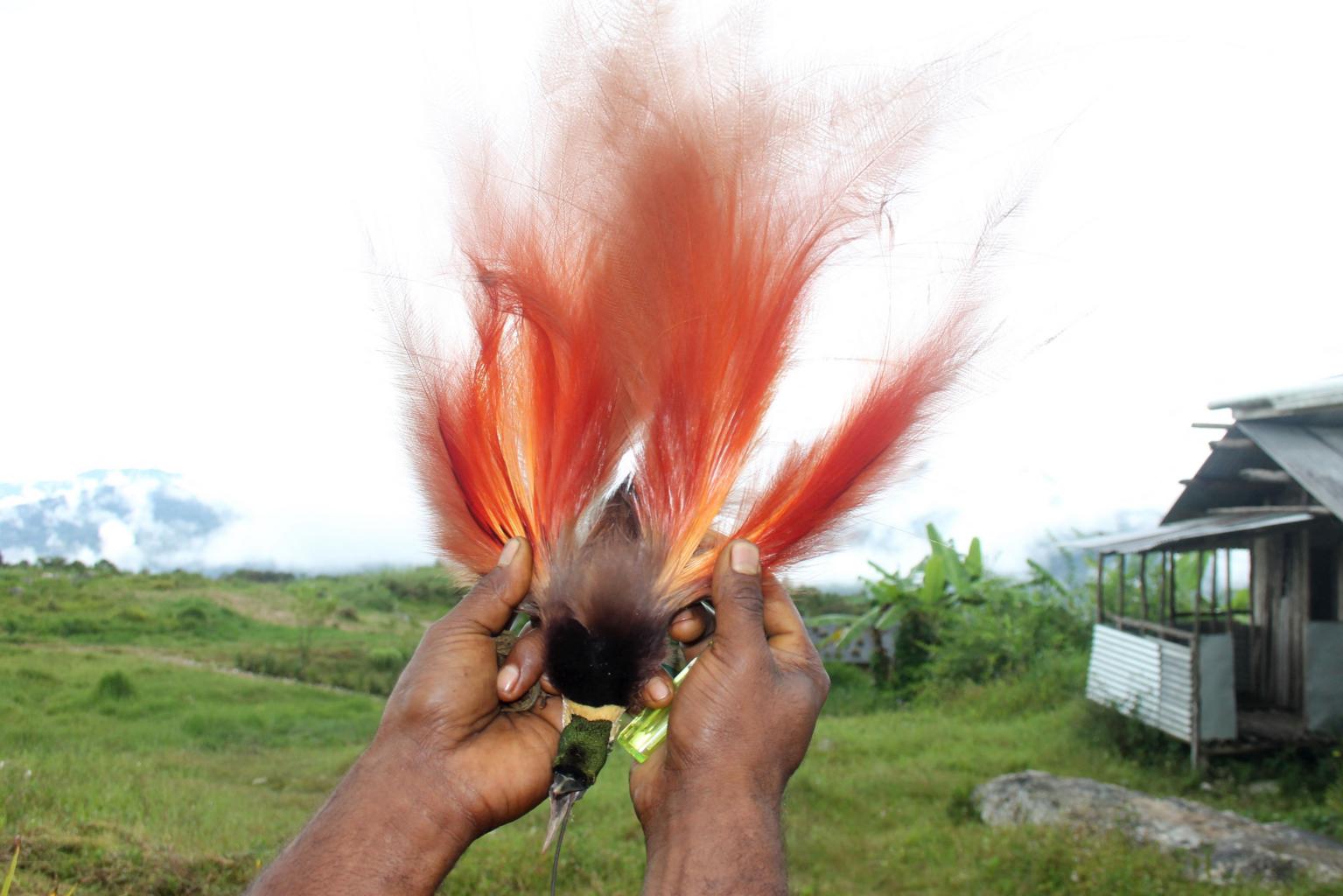Loggers threaten Papua New Guinea's unique forest creatures
Sign up now: Get ST's newsletters delivered to your inbox

A man displays a preserved bird of paradise’s feathers, locally known as Raggiana bop, in Golgubip, Papua New Guinea.
PHOTO: AFP
Follow topic:
GOLGUBIP, PAPUA NEW GUINEA (AFP) - In Papua New Guinea's isolated Star Mountains, indigenous people say the tree kangaroo is king and the bird of paradise is queen. But both have a price on their heads.
These extraordinary species have long been prized by traditional hunters, but conservationists now fear the forests they live in, one of Earth's last great wilderness areas, could soon fall to axe and bulldozer.
"Old people say tree kangaroo is the king," said Mr Lloyd Leo, a young resident of Golgubip, a mountain community where most people are still subsistence farmers. Their ancestors lived a neolithic lifestyle until only decades ago.
"He lives high in the forest. Certain fruits he doesn't eat. He only takes the fresh ones," he explained.
The marsupial, which looks like a mix of a kangaroo and a lemur, was once a form of currency, used to pay bride prices. Its tail is still worn as an emblem.
Already the creature is listed among the planet's most threatened species, deemed critically endangered on the International Union for Conservation of Nature's Red List.
Two species of birds of paradise also live in the area, and one, called "karom" in the local Faiwol language, they call the queen of birds.
People hunt them on a small scale, despite it being illegal. The feathers and stuffed birds are prized, kept in homes and brought out for festivals.
'People will become desperate'
But the trees around Golgubip are also valuable, as are others like them across Papua New Guinea, and the dual threat of deforestation and hunting may seal the fate of the nation's unique creatures.
"In the villages, there is a general expectation of economic development, which is by and large not happening," said Dr Vojtech Novotny, a biologist working with the New Guinea Binatang Research Centre.
"People will become desperate and go for development at any cost."
The country's population has roughly tripled since independence in 1975 and now stands at more than nine million.
With fewer forests left in South-east Asia, and much of the land there converted to oil palm plantations, some logging firms are now turning attention to Papua New Guinea, said Dr Novotny, who has worked in the country for 25 years.
In the past, the authorities mainly allowed "selective" logging, which enables forests to quickly recover. But that may be changing, he said.
"There is now pressure for large agriculture projects. The big issue here is oil palm. Once you have the first cut, you come for the second and third. Very soon, you destroy the forest structure. That happened basically in Borneo," Dr Novotny said.
According to the monitoring website Global Forest Watch, Papua New Guinea's forests covered 93 per cent of its land surface in 2010.
But the country has seen a 3.7 per cent decrease in tree cover since 2000, according to the website.
At this year's global UN climate summit, COP 26, Papua New Guinea was among around 100 countries to pledge to end deforestation by 2030.
But illegal logging has become such a problem that non-governmental organisations and some local politicians have demanded the authorities take urgent action now.
Tribal conflicts
The Raggiana bird of paradise is featured on the country's flag and although officially only one related species, the blue bird of paradise, is listed as "vulnerable" by the IUCN, biologists say no one really knows their status for sure.
There are also concerns about another bird, Pesquet's parrot, which has distinctive red and black feathers that are worn in traditional dress for indigenous ceremonies.
"These bright red feathers are very highly prized for headdresses," said Mr Brett Smith, curator of the Port Moresby Nature Park, adding that it appeared there were more Pesquet's parrot feathers now in tribal dress than on living birds.
Biologists say they want to involve more Papua New Guineans in conservation.
But it has proved hard, in the face of poverty, a lack of education and low awareness of the impact humans can have on the environment.
But there have been success stories.
As headhunting declined in the pig-nosed turtles' habitat, more people moved in and the rare creature became part of the local diet, according to Ms Yolarnie Amepou, director of the Piku Biodiversity Network.
But by involving local children in the preservation of key species, they created a generation - now adults - invested in the pig-nosed turtles' survival. Hunting has now eased off.
She said: "This environment is what they depend on every day. If we want to save the turtle, we have to fix the people."

